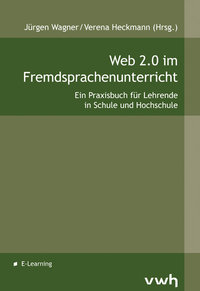
Digital Storytelling
by
Renke Samusch, Dominik Baumecker and Moritz Zockler
Web 2.0 im Fremdsprachenunterricht
Renke, Dominik and Moritz, who are all teacher trainees, have written a very interesting and detailed article which explores the use of comic and video creation software for teaching storytelling in a motivating and engaging way.
In the article, they mention, in particular, Bitstrips, xtranormal, pixton and strip generator but they also provide a link to Alan Levines wiki resource, acknolowdging that many more comic and video creation tools exis.
Renke, Dominik and Moritz believe that students become more engaged in writing process when they realise that they can use these tools to bring their own stories alive by adding a visual element through pictures and video. Being able to use the tools provides a great way of encouraging student creativity. The choice of images/characters and how they are put together is limited only by the student's imagination.
Also, the student's final production can then form the basis of a verbal presentation to the rest of the class, which helps in practicing and developing spoken language skills. Obvioulsy this can also lead to great opportunities for team work where groups of students are tasked with producing their story and presentation.
As a bonus, Renke, Dominik and Moritz point out that organisational skills and multimedia skills are also learnt during the process, even though they are not the main focus of the task.
Renke, Dominik and Moritz feel that younger students may need more support in using such tools and that, in such cases, it "is crucial" that their teachers are competent in using the tools before introducing the exercise. This is often not the case for older students where they are very quick to pick up new programs and may even teach their teachers a thing or two!
As well as students creating work, teachers can also prepare stories in advance thus controlling "the quality of the language" to be used. This can be good for practicing reading skills while still allowing students to add their own creativity to the final visualization. However, Renke, Dominik and Moritz warn that the topic should be chosen carefully so that it will inspire students to produce their comic/video.
Teacher prepared comics/videos could also be used as the initial prompt for creative writing, maybe based around the current vocabulary that is being studied. The students use this work as the basis for their story and presentation. Renke, Dominik and Moritz believe this is a great way for promoting story telling and can be used with all age groups. Through these tasks, students are introduced to the idea of building plots and using dialogue appropriately. Encouraging students to role play their final presentations is another way of engaging and motivating the students in the writing process.
Renke, Dominik and Moritz also provide great examples of where these tools can be used for more than just storyteling such as for learning:
- grammar
- vocabulary
- cultural studies
- history etc
- time constraints - for learning and using the tools
- overusing the tools - trying to use all the features
- overexposure to the tools - reducing student motivation
| You can buy a copy of the book online directly from the publisher (Verlag Werner Hülsbusch) or if you have any queries email Verlag Werner Hülsbusch at vertrieb@vwh-verlag.de |
***************************** The release of 'Web 2.0 im Fremdsprachenunterricht' is accompanied by a series of free webinars where the authors will present and discuss their articles.Information about these online meetings, which will be held in the presenter's mother tongue, can be found at Fremdsprachenunterricht 2.0 You can register for any of the webinars at Fortbildung Online. Recordings of the webinars will also be published on the LPM's website. ***************************** |

0 comments:
Post a Comment